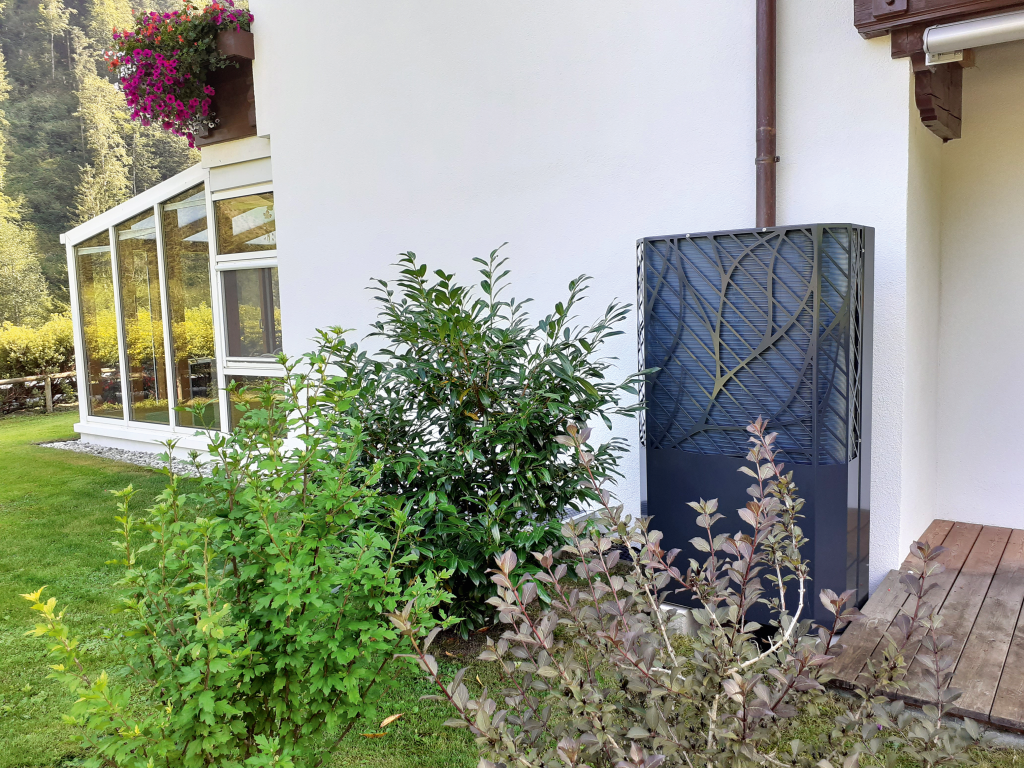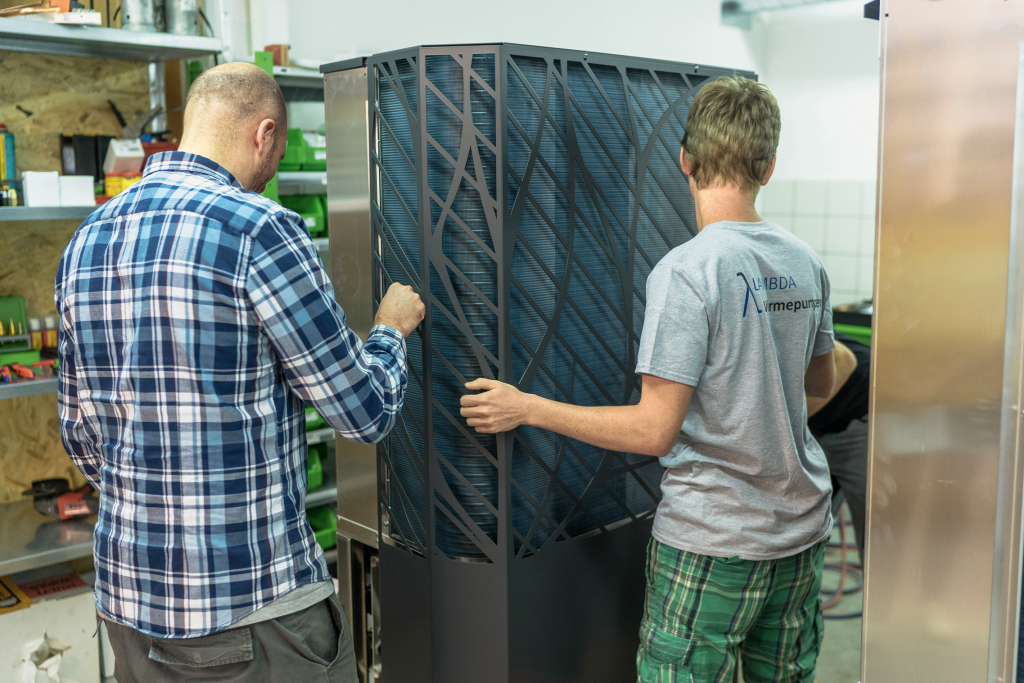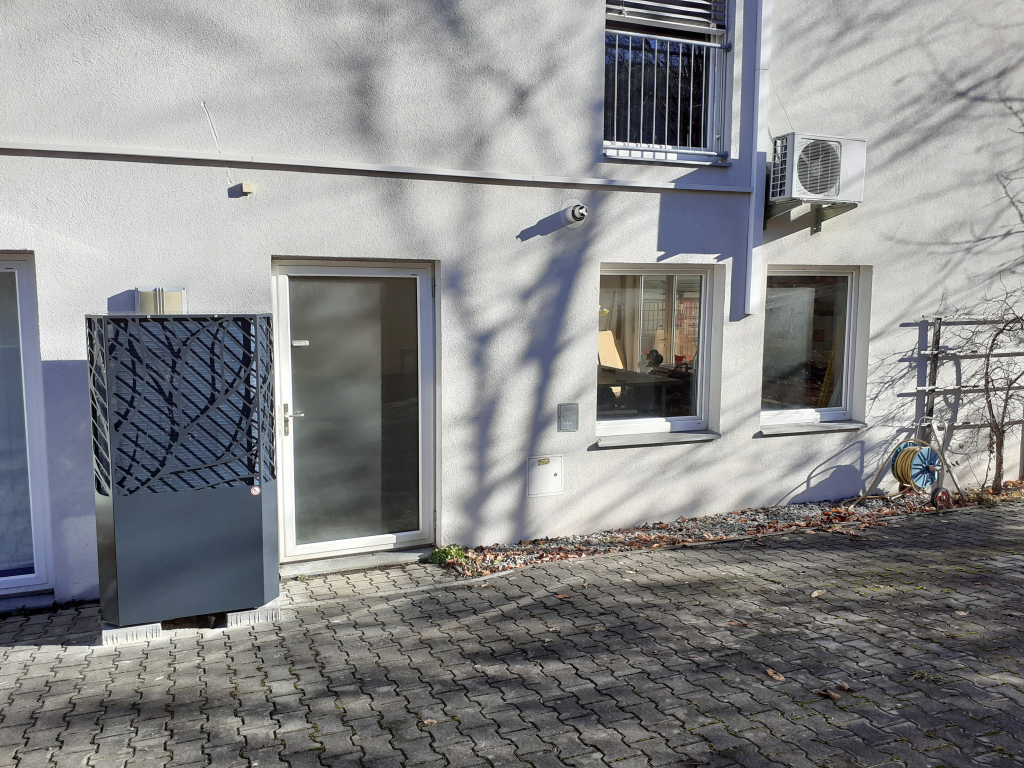Two young engineers are shaking up the scene and construct their own heat pumps of the latest generation
The success story of Lambda Heat Pumps reads like a modern fairy tale reminiscent of Apple. Two young engineers in Brixen im Thale began to question the previous principle of heat pumps and built their own prototype. The year was 2019, when the first heat pump with the so-called 3K process was put into operation, and Florian Entleitner and Florian Fuchs founded their company Lambda Heat Pumps. Its special feature: The heat pumps from Tyrol can be installed relatively easily in existing buildings and work with existing radiators. Several subsidies and awards later, the two Tyroleans are producing around 3,000 heat pumps a year, and two joint ventures abroad are going well. Founder Florian Entleitner gives us a glimpse behind the scenes of this exciting start-up. Lambda indicates the thermal conductivity of a building material. So, the company name was not chosen arbitrarily.

© Lambda Wärmepumpen GmbH
Lambda indicates the thermal conductivity of a building material.
So, the company name was not chosen arbitrarily.
Florian Entleitner: The Greek letter lambda stands for thermal
conductivity, which suited us very well. We were able to improve
the transfer of heat from air into the refrigerant in heat pumps, and
achieve a high thermal conductivity.
Heat pumps are seen as the panacea for avoiding the use of
fossil fuels. Is that true from your point of view?
Entleitner: The higher the temperature you have to provide, the
more inefficient heat pumps become. People used to install heat
pumps as underfloor heating in new buildings, and that works well.
For radiators in existing buildings, they were rather unsuitable. This
has changed dramatically in recent years. Our product in particular
has a very high efficiency, and you can also heat a building efficiently
with radiators. If you want to operate a radiator at up to 55 degrees,
this works perfectly well, and you can have lower costs
compared to fossil fuels. If you need 70 degrees, then the operating
costs with natural gas will currently still be cheaper
In Brixen im Thale in Tyrol it gets extremely cold in winter. Was
that a source of inspiration for the design and a self-experiment
under extreme conditions?
Entleitner: That is indeed a competitive advantage. With heat
pumps, the defrosting process is sometimes a critical moment. From
the mechanical engineering point of view, you have to test and
rebuild, because theory often doesn’t translate so easily into practice,
and processes cannot be simulated. In such a place with long
heating periods and very low temperatures in winter, you can detect
problems early and take countermeasures.
What do you mean by the defrosting process – that is something
most people are more familiar with from refrigerators and freezers?
Entleitner: A heat pump extracts energy from the outside air. This
cools the air, and it can happen that the temperature slips below
the dew point. Then water freezes on the air heat exchanger and
the heat pump has to defrost from time to time. This works automatically,
without the need for any additional action. If it is just
below zero degrees outside and 100 percent humidity, it may be
necessary to defrost briefly every hour and a half. The process is
reversed, which takes two to three minutes. But you don’t notice
that during operation.

© Lambda Wärmepumpen GmbH
Why did you specialise in heat pumps?
Entleitner: My colleague and I had already worked in the industry,
so the technology was not new to us. We both studied energy and
process engineering, and thermodynamics has always fascinated
us. My master’s thesis was on heat transfer in air heat exchangers
for heat pumps. When I wrote it, we discovered a concept that had
not yet been implemented and set to work.
For a long time, heat pumps were considered large, noisy and
complicated to install. What has changed technically here?
Entleitner: There are air, ground and groundwater heat pumps,
although in recent years the trend has clearly been towards air heat
pumps, as their efficiency has continued to increase. Our air-source
heat pumps are extremely competitive with ground-source heat
pumps in terms of operating costs, and the investment costs are
much lower. Sound pollution is a big issue, but it can be managed.
We work a lot with soundproof covers and with well-dimensioned
fans that operate in speed ranges where there are few sound emissions.
So, your units are also suitable for use in densely built-up areas?
Entleitner: You have to observe the planning guidelines, for which
there are sound calculators such as from Heat Pump Austria or from
the Provinces. Here, the necessary distance to the neighbouring
property is calculated based on the selected model. With a single-family house on a greenfield site, almost
anything is feasible, with a terraced house you
are a little more limited. However, a roof terrace
or balcony may also be suitable for installing a
heat pump. You have to look at this on a caseby-
case basis. Basically, a good air exchange is
needed, the heat pump should not be placed in
a niche, and there must be a way to drain the
condensation
Your heat pump is considered the most efficient
in the world in its class. What class is that?
Entleitner: In our case, this regards air-source heat pumps. There
are various efficiency criteria such as the SCOP value (NB: the annual
performance factor of a heat pump within different operating
states). For low-temperature applications we achieve a SCOP of 5.7,
for radiators the heat pump has a SCOP of 4.5, which means you
get 4.5 times the electricity used for heat over a whole year. Our
air-source heat pumps are on top in both criteria.

© Lambda Wärmepumpen GmbH
How did you manage to achieve such efficiency and outpace
the international competition?
Entleitner: Sometimes it’s an advantage to approach a topic afresh.
We were able to start from scratch and design a
heat pump without having to adhere to in-house
standards and develop it freely. We have a very
high heat transfer, i.e. in the transition from air
to the refrigerant via an air heat exchanger. We
achieve the high efficiency because we can create
a special flow in the air heat exchanger’s
pipes in the refrigerant-carrying components. At
the end of the 1990s, there were already experiments
on this by research institutions, but it
was not possible to keep the operating conditions
stable. We were able to solve this problem. We bought a
second-hand heat pump, in which we only liked the air heat exchanger,
for 900 euros and converted it. After countless conversions,
measurements and comparisons in a simulation programme,
we figured out how it worked best. From this we developed our
series product.
What do you understand by a 3K process?
Entleitner: 3K stands for the temperature of three Kelvin. For us,
that is the average temperature difference we need between air
and evaporation temperature. The higher the heat transfer, the
lower the temperature difference can be kept. Normal heat pumps
need between eight and twelve degrees of temperature difference
for the process to work. Since we only need a difference of three
degrees, this results in higher efficiency. For every one degree less
temperature needed, you save between two and four percent of
energy.
One of the great advantages of your heat pump is that it can
also be operated in existing buildings with old radiators.
Entleitner: 90 percent of our heat pumps are used in renovations
or in old buildings. Physically, it’s always better to get by with lower
temperatures because that increases efficiency. In most cases,
older radiators have a maximum flow temperature of 50 to 55 degrees
(NB: the temperature that reaches the radiator), which is
enoug
How does your heat pump protect against legionella when
providing hot water?
Entleitner: That is actually due to the refrigerant, because we use
natural R290, i.e. propane. We achieve a flow temperature of up to
70 degrees with it. Legionella multiply at temperatures of 35 degrees and above, and die at 60 degrees due to thermal disinfection.
No additional heating, for example with a heating rod, is needed to
ensure thermal disinfection.

© Lambda Wärmepumpen GmbH
Why do you use propane as a natural refrigerant?
Entleitner: This refrigerant is now becoming the new standard.
Standard synthetic refrigerants are considered very strong greenhouse
gases and will be more or less banned by the EU by 2030 as
part of a phased plan. A natural alternative is propane, which has
a GWP (Global Warming Potential) factor of three, while the artificial
refrigerant R410A has a GWP of about 2,000. Newly developed
synthetic refrigerants also have a GWP of 200 to
500, which is why natural refrigerants are currently
gaining ground. In Germany, the use of
natural refrigerants, such as propane, is explicitly
promoted.
In the four years of your company Lambda’s
existence, you have won various prizes and
received several subsidies. Does that help with
sales?
Entleitner: It definitely helps. We have had to do
very little marketing so far. Our company has
developed quite naturally, as our efficiency figures have put us at
the top of the promotion lists and we have won several prizes. Great
partnerships have developed through satisfied end customers and
heating contractors. Word of mouth has also been very important.
For the past three years, we have been able to record a growth of
300 percent per year, and that without any investment in
marketing.
How many heat pumps do you produce?
Entleitner: We are in the middle of series production. In 2022, we
have produced 1,000 heat pumps, in 2023 it will be 3,000 in total,
and in 2024 up to 7,000 units are planned. The
necessary materials have already been ordered.
In addition, we have recently established two
joint ventures in Germany and Italy, which will
produce about 1,200 units under licence as early
as 2023, once production starts. We are on a
pretty good track
When can we buy Lambda shares?
Entleitner: Unfortunately, they don’t exist. But
our heat pumps are available from about 15,000
euros net (NB: plus installation costs).